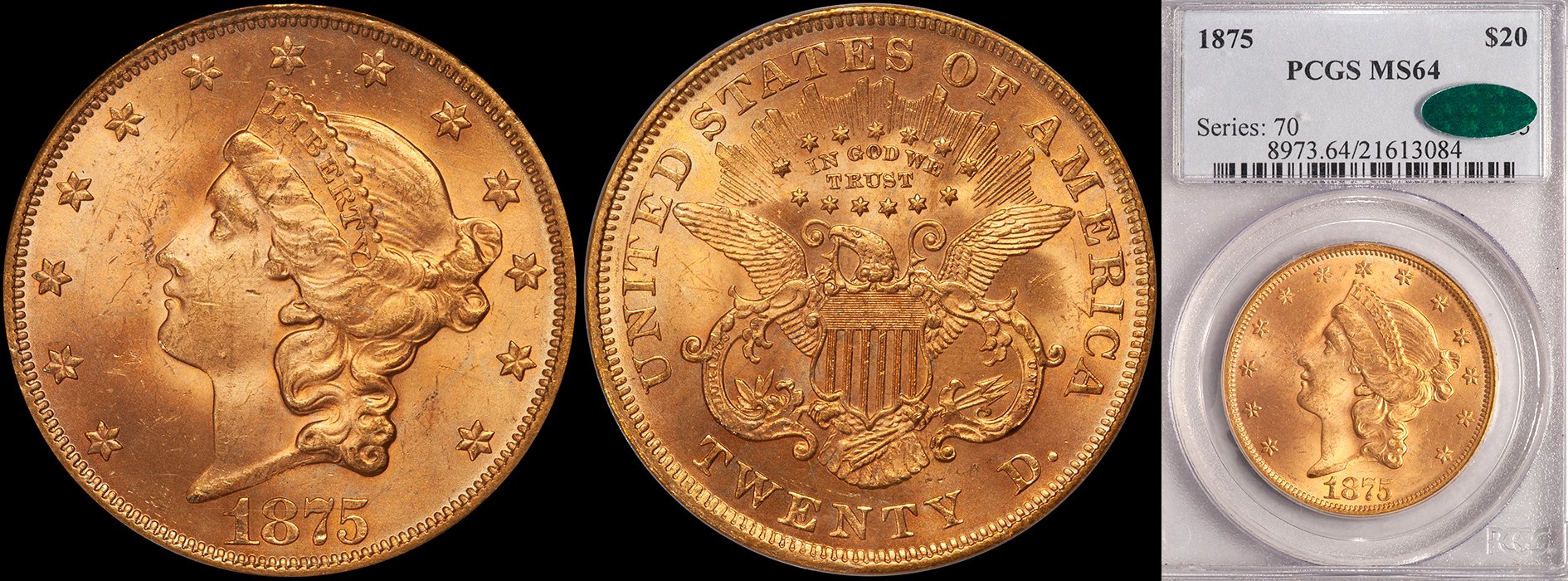1859-D $1.00 PCGS AU55 CAC
/Old Green Label holder. By today's standards, I grade this coin a solid AU58. While showing a typical strike with some weakness at this center, there is little else that is "typical" about this coin. It shows attractive deep, even green-gold color on the obverse and reverse with a good deal of underlying luster. Some dirt can be seen within the lettering on the obverse and the surfaces are very clean with no major abrasions or mint-made defects notable to the naked eye. While probably the most available Dahlonega gold dollar of the Type Three design, it is never easy to locte an affordable example of this date with original surfaces and good overall eye appeal.









